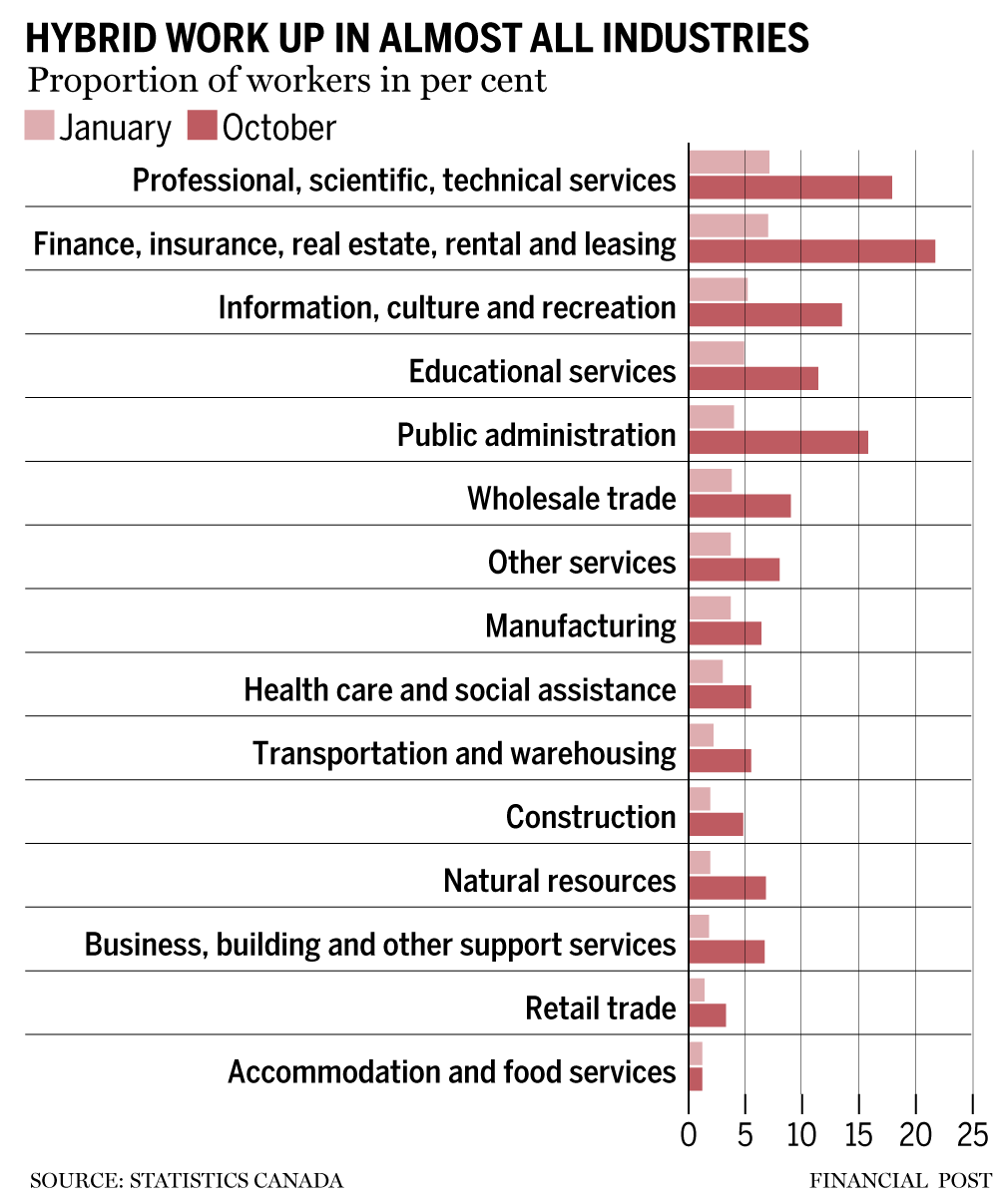Victoria Wells: Google searches for reasons to get out of work are up 630% from 2018 to 2022
Publishing date:
Nov 08, 2022 • 4 days ago • 3 minute read • 10 Comments
Close to half, or 45 per cent, of desk workers in Canada’s biggest city say they are disengaged from their jobs. Photo by Getty Images/iStockphoto A quiet quitting epidemic appears to be picking up speed amid mounting evidence workers are disengaging from their jobs.
Advertisement 2 This advertisement has not loaded yet, but your article continues below.
Google searches for reasons to get out of work are up 630 per cent from 2018 to 2022, according to research by Frank Recruitment Group Services Ltd. Search terms including “calling in sick,” “best excuses for missing work” and “realistic excuses for missing work” dramatically jumped in 2021, just when employers started calling employees back to the office, Rowan O’Grady, Frank Recruitment Group’s president of Americas, says in a news release, adding that implies it hasn’t been an easy transition.
FP Work By clicking on the sign up button you consent to receive the above newsletter from Postmedia Network Inc. You may unsubscribe any time by clicking on the unsubscribe link at the bottom of our emails. Postmedia Network Inc. | 365 Bloor Street East, Toronto, Ontario, M4W 3L4 | 416-383-2300
At the same time, productivity has nose-dived in the United States, plunging the most in the first six months of the year since records began in 1947, the U.S. Bureau of Labor Statistics says. Disengagement and quiet quitting are likely fuelling the drop, experts tell the Washington Post. “There’s a highly empowered workforce that was engaged in a certain amount of quiet quitting,” economist and former U.S. treasury secretary Larry Summers says, creating “a certain amount of absenteeism on and off the job” and contributing to the plunge in productivity.
Advertisement 3 This advertisement has not loaded yet, but your article continues below.
That’s causing a growing sense of anxiety among bosses eager to prevent low output from bruising balance sheets. The toll could be enormous: disconnected workers cost the global economy US$7.8 trillion annually, Gallup Inc. estimates in its latest state of the global workplace report.
So far, the trend hasn’t shown up in Canadian data. Productivity in the second quarter of 2022 increased for the first time in two years, Statistics Canada reported in September. But there is anecdotal evidence that knowledge workers in Toronto are less interested in work than they once were, fuelling a “disengagement crisis,” according to recruiter Robert Walters Canada.
Close to half, or 45 per cent, of desk workers in Canada’s biggest city say they are disengaged from their jobs, a recent poll by the agency notes. Recession worries are one reason why people are pulling back from work. But staffers also say they are less engaged because their workplace has become “unrecognizable” over the past 12 months, thanks to high employee quit rates, fewer people at the office and less opportunities for socializing with colleagues.
Advertisement 4 This advertisement has not loaded yet, but your article continues below.
Recommended from Editorial The quiet quitters are getting quiet fired: The silent war playing out in offices Workers are stressing out over their finances — and it’s costing employers billions Hybrid work is the future, but expect to be in the office more often than not Employers are missing out on this pool of potential employees eager to work The recruitment company points the finger squarely at home working for the disappointing showing. “The hybrid-working world and subsequent decline in office attendance is having a detrimental impact on employee engagement,” Martin Fox, managing director of Robert Walters Canada, says in a news release.
That might be bad news for employers, because data shows hybrid work is gaining in popularity. One in 10, or 1.7 million workers, split their time between the office and home in October, according to the latest Statistics Canada labour force survey. That’s a rise of 5.4 percentage points since January 2020, and a gain of 0.4 percentage points since September.
This advertisement has not loaded yet, but your article continues below.
Article content
“Hybrid work is here to stay,” says David Boone, chief executive of Staples Canada ULC, who has noticed the trend is gaining steam among his clients, which include government agencies, large corporations, small businesses and individuals working from home. However, he says more companies are bringing employees back into the office for more days, and he expects those numbers to grow in the months ahead as communication problems persist under the hybrid model.
In the meantime, companies are turning to other tactics to get employees mentally back on board. Throwing more money at them is one solution, according to recruiter Robert Walters. But that’s more of a “short-term remedy,” Fox says, due to the rising cost of living. Instead, companies need to focus on developing a culture that keeps staff connected to their jobs and motivated.
This advertisement has not loaded yet, but your article continues below.
Article content Bosses have their work cut out for them. Worries about a slowing economy are already taking a toll on employee morale, and though the labour market remains strong, reports of layoffs are increasingly making headlines. Bosses betting a forced return to the office will fix everything may find it makes engagement worse, because staff continue to prize the ability to work from home.
With all that doom and gloom, it’s no wonder quiet quitting is trending.
• Email: vwells@postmedia.com | Twitter: vwells80
This column was first published in the FP Work newsletter, a curated look at the changing world of work. Sign up to receive it in your inbox every Tuesday.
